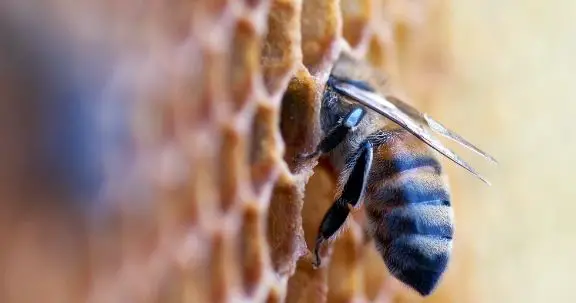If you have stumbled upon this post because you have a swarm of honeybees on your property that you would like someone to remove, please contact me directly. However, if you are a beekeeper and you want to know how you can attract and trap your own swarm of bees, read on.

Last year, I wrote a blog post on honeybee swarms. If you want some basic information on swarming, please read that first. In general, a honeybee colony will swarm when they are looking for a new place to live.
A clever beekeeper, armed with this knowledge, can create an ideal location for those swarming honeybees to call home. The majority of this information was taken from a Cornell Cooperative Extension publication called “Bait Hives for Honey Bees”. This entire publication is available for download by clicking on this image:
In general, a “bait hive” is simply a box or container that looks like an ideal home to a honeybee. If you prepare the bait hive while keeping a few important things in mind, you stand a good chance of having an entire colony of bees move in and make themselves at home. For the beekeeper, this means free bees!
SIZE
The size of the bait hive container should be approximately 40 liters (1.4 cubic feet). The shape of the container does not matter. It can be round, square, or rectangular. Some people have used big biodegradable planting pots as bait hives. Others have used standard deep Langstroth boxes.
ENTRANCE
The entire box should be sealed up tightly to protect it from the elements, but there should be an entrance, placed near the bottom of the container, with a diameter of roughly 1¼ inches. I suggest using a round entrance so that it can be plugged up later if necessary, with a cork.
POSITIONING
The swarm trap should be placed in a partially shaded area, preferably on a tree or side of the house. It should be placed approximately 15 feet (5 meters) off the ground and with an entrance that is facing South, if at all possible. If you have a second-floor balcony, this would likely be a great spot for a bait hive.
ODOURS
Honeybees can be coaxed by the smells of a potential new home (similar to how real estate agents bake cookies during open houses I guess). The smells that are most important to them are:
- Queen pheromone
- Lemongrass Oil
- Beeswax
You can buy commercial swarm lure scents, which are not very expensive. If you happen to have lemongrass oil on hand, this is said to be very similar to the smell of Queen pheromone. A few drops of either inside your bait hive will be plenty. Beeswax rubbed inside the container will also be enticing for scout bees whose job is to find a new home for the colony. I bought my lemongrass oil from well.ca.
TIMING
Lastly, it’s a good idea to have your bait hive set up and in place before the swarming season begins. For your area, this means that it’s a good idea to have it in position and baited with scents by the time the first spring flowers start blooming. Once the first nectar flow happens, the bees will start swarming. Around my neck of the woods, this happens in early May.
PROS AND CONS
There are obvious advantages to catching a swarm of bees. The first advantage is definitely cost. In Ontario, it costs nearly $200 for a nuc of bees. Aside from the bait hive material, catching a swarm is absolutely free.
If you happen to catch a colony that has swarmed from a feral colony, then there’s a good chance that they are more resistant to pests and diseases than some commercially bred lineages. You may also be lucky enough to capture a strong colony that has never been chemically treated.
As for downsides: you’re not guaranteed to catch a swarm. This is obviously a gamble if you’re relying on bees from a bait hive. It really comes down to whether swarming bees find your swarm trap and consider it an ideal living location. Lastly, one other negative aspect is that you do not know whether the colony is both disease and pest free. Just because they swarmed does not mean that they are free from very serious diseases like American Foul Brood. Be on the lookout for diseases and pests in newly captured colonies. Do your best to quarantine them from other colonies in your apiary until you know they are healthy.
One last note: there is a chance that captured colonies are more aggressive than colonies purchased from a breeder. This can happen because a lot of bees are bred commercially for docile characteristics. Wild colonies may be lacking this trait. I do not consider this a real problem and you always have the option of re-queening your colony. Your new queen will start laying and your bees’ temperament will begin to change in 3 weeks when the first new workers are born.
Good luck and please share your experiences below. I would love to hear about your swarm trap ideas and successes!